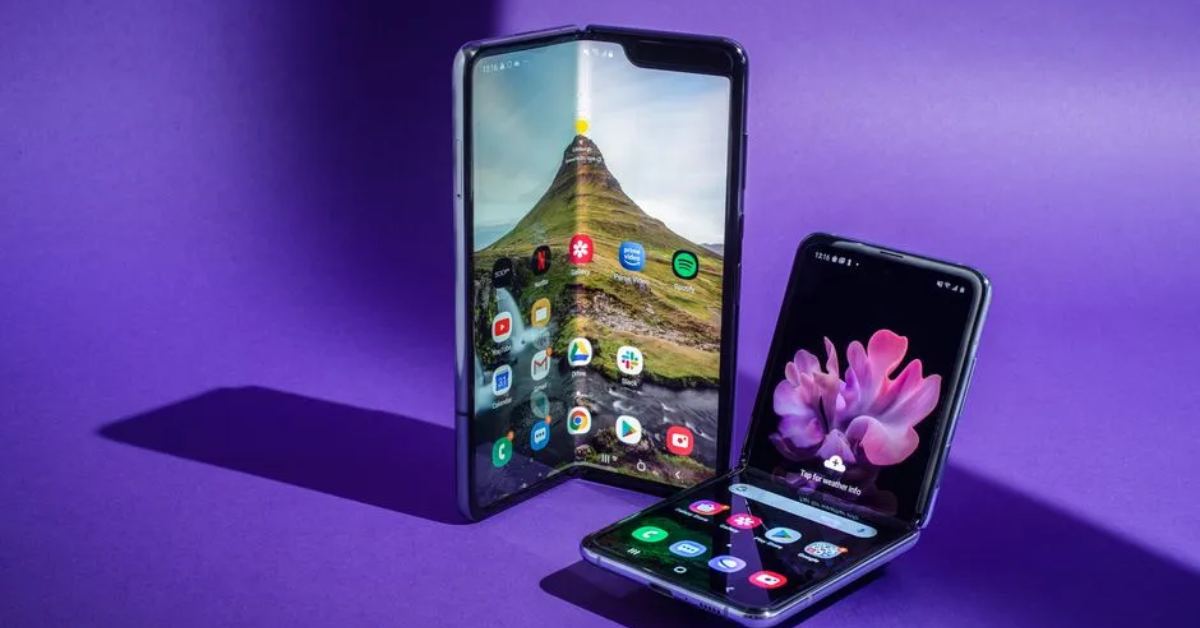Imagine this: you’re on the bus, scrolling through endless TikTok videos on your phone when, snap, you unfold the screen, transforming it into a mini-tablet for a more immersive viewing experience. This futuristic scenario isn’t science fiction; it’s the world of foldable smartphones, and it’s generating major buzz. But, amidst the hype, a crucial question emerges: are foldable smartphones truly the future of mobile tech in the USA?
Part 1: The Allure of the Fold
Foldable phones offer a tantalizing glimpse into a future where versatility reigns supreme. Their ability to morph from pocket-sized companions to tablet-like powerhouses unlocks a world of possibilities. Imagine seamlessly transitioning from reading an e-book on the train to taking detailed notes for work on the same device. For gamers, the expansive canvas promises deeper immersion, while multitaskers rejoice in the split-screen magic. But beyond practicality, foldables ooze innovation and design flair. Their sleek, futuristic form makes them the ultimate tech accessory, turning heads and sparking conversations.
Early adopters in the US are already embracing the fold. Tech enthusiasts can’t get enough of the novelty, while professionals in specific fields, like graphic designers and mobile filmmakers, are discovering the benefits of a larger, portable screen. Market research firm IDC even predicts that foldable phone shipments will grow by a whopping 54.6% in the US by 2025, suggesting a wave of mainstream adoption on the horizon.
Part 2: Challenges and Roadblocks
However, the road to foldable revolution isn’t paved with roses. The first, and perhaps most daunting, obstacle is the price tag. Currently, these devices reside in the luxury bracket, with entry points exceeding $1,000. For the average consumer, that’s a hefty investment for a technology still in its early stages.
Then there’s the durability factor. While manufacturers are diligently addressing concerns about screen creases and hinge reliability, the question remains: can these delicate devices withstand the everyday wear and tear of a clumsy user (or an adventurous toddler)? Additionally, software needs to catch up to hardware. Many apps haven’t been optimized for the unique format of foldables, leading to awkward scaling and clunky user experiences.
Finally, there’s the battery life conundrum. The increased screen real estate often comes at the cost of smaller batteries, raising concerns about whether these devices can last a full day on a single charge.
Part 3: The Future Unfolds
Despite these challenges, the future of foldable technology in the US appears bright. Manufacturers are pouring resources into research and development, constantly refining materials, hinges, and software to create more durable, affordable, and user-friendly devices. With technological advancements and increased competition, we can expect the price point to gradually decrease, making foldables more accessible to the average consumer.
Beyond mainstream adoption, foldables have the potential to carve out exciting niches in specific markets. Imagine doctors reviewing X-rays on a portable tablet-sized screen, artists sketching masterpieces on a digital canvas, or architects exploring 3D models with unparalleled precision.
The question, then, isn’t if foldable smartphones will succeed, but how. They might not replace traditional smartphones entirely, but they have the potential to become a valuable alternative for consumers seeking a blend of power, portability, and futuristic design.
Conclusion
The future of mobile tech in the US is a canvas waiting to be unfolded. While challenges remain, the allure of versatility, innovation, and immersive experiences offered by foldable smartphones is undeniable. As technology matures and prices become more competitive, these devices may well become the next chapter in our mobile evolution. So, the next time you’re caught in a tech aisle dilemma, remember, the answer might just be a fold away.
What do you think? Are foldable smartphones the future of mobile tech in the USA? Share your thoughts in the comments below!
